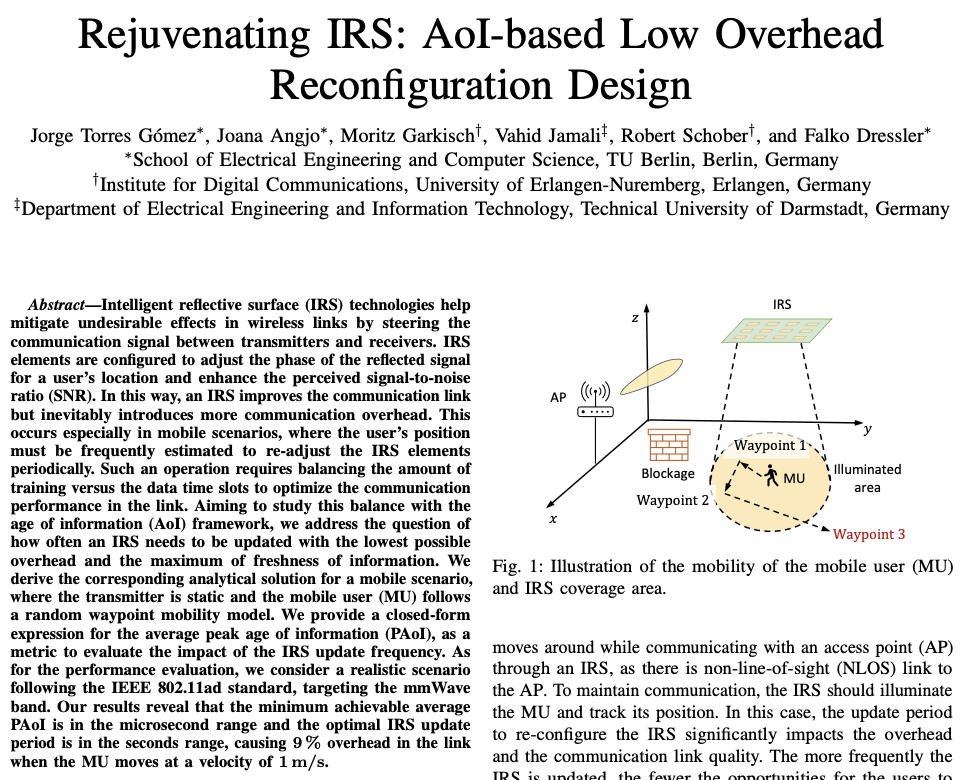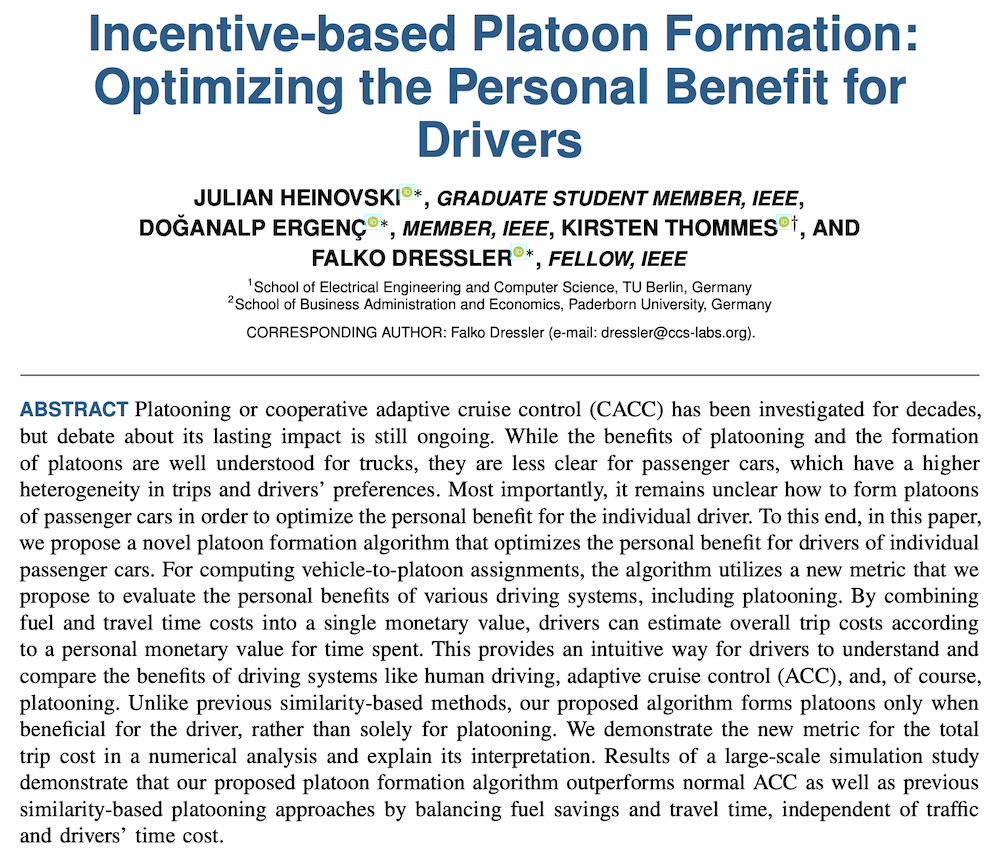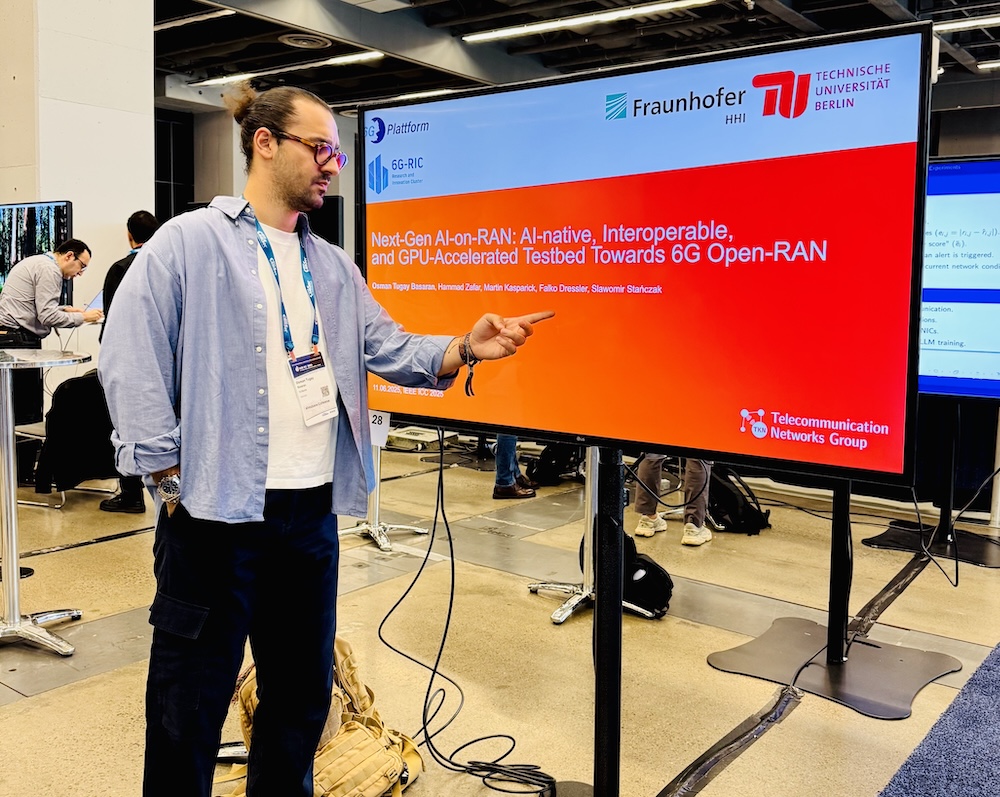Literature Database Entry
dressler2023edge-tutorial
Falko Dressler and Onur Altintas, "6G Virtualized Edge Computing - From Vehicles to Edge and Back," Tutorial, IEEE Consumer Communications and Networking Conference (CCNC 2023), Las Vegas, NV, January 08, 2023.
Abstract
As we move from 5G to 6G, edge computing is one of the concepts that needs revisiting. Its core idea is still intriguing: Instead of sending all data and tasks from an end user’s device to the cloud, possibly covering thousands of kilometers and introducing delays lower-bounded by propagation speed, edge servers deployed in close proximity to the user, e.g., at some base station, serve as proxy for the cloud. This is particularly interesting for upcoming machine learning (ML)-based intelligent services, which require substantial computational and net- working performance for continuous model training. Yet this promising idea is hampered by the limited number of such edge servers. In a parallel universe, car makers have discussed challenges and opportunities of the con- nected cars vision in relation to the need for distributed data management solutions ranging from the vehicle to the mobile edge and to the data centers. As a new concept, vehicle micro clouds have been proposed that bridge the gap between fully distributed vehicular networks based on short range device to device communication and 5G+ based infrastructure for cen- tralized solutions. Using selected application examples including the use of virtual traffic lights, intelligent intersection management, and platooning, we assess the needs on the underlying system components with a particular focus on inter-vehicle communication. Researchers from academia and industry met multiple times at an international Dagstuhl seminar to discuss open research challenges as well as open issues related to market-oriented design. We are now entering an era that might change the game in road traffic management. In this tutorial, we discuss a way forward, namely the virtual edge computing (V-Edge) con- cept. V-Edge helps bridging the gap between cloud, edge, and fog by virtualizing all available resources including the end users’ devices and making these resources widely available. Thus, V-Edge acts as an enabler for novel microservices as well as cooperative computing solutions in next-generation networks. We introduce the general V-Edge architecture, and we charac- terize some of the key research challenges to overcome, to enable wide-spread and intelligent edge services.
Quick access
Contact
Falko Dressler
Onur Altintas
BibTeX reference
@misc{dressler2023edge-tutorial,
author = {Dressler, Falko and Altintas, Onur},
title = {{6G Virtualized Edge Computing - From Vehicles to Edge and Back}},
howpublished = {Tutorial},
publisher = {IEEE Consumer Communications and Networking Conference (CCNC 2023)},
location = {Las Vegas, NV},
day = {08},
month = {01},
year = {2023},
}
Copyright notice
Links to final or draft versions of papers are presented here to ensure timely dissemination of scholarly and technical work. Copyright and all rights therein are retained by authors or by other copyright holders. All persons copying this information are expected to adhere to the terms and constraints invoked by each author's copyright. In most cases, these works may not be reposted or distributed for commercial purposes without the explicit permission of the copyright holder.
The following applies to all papers listed above that have IEEE copyrights: Personal use of this material is permitted. However, permission to reprint/republish this material for advertising or promotional purposes or for creating new collective works for resale or redistribution to servers or lists, or to reuse any copyrighted component of this work in other works must be obtained from the IEEE.
The following applies to all papers listed above that are in submission to IEEE conference/workshop proceedings or journals: This work has been submitted to the IEEE for possible publication. Copyright may be transferred without notice, after which this version may no longer be accessible.
The following applies to all papers listed above that have ACM copyrights: ACM COPYRIGHT NOTICE. Permission to make digital or hard copies of part or all of this work for personal or classroom use is granted without fee provided that copies are not made or distributed for profit or commercial advantage and that copies bear this notice and the full citation on the first page. Copyrights for components of this work owned by others than ACM must be honored. Abstracting with credit is permitted. To copy otherwise, to republish, to post on servers, or to redistribute to lists, requires prior specific permission and/or a fee. Request permissions from Publications Dept., ACM, Inc., fax +1 (212) 869-0481, or permissions@acm.org.
The following applies to all SpringerLink papers listed above that have Springer Science+Business Media copyrights: The original publication is available at www.springerlink.com.
This page was automatically generated using BibDB and bib2web.






